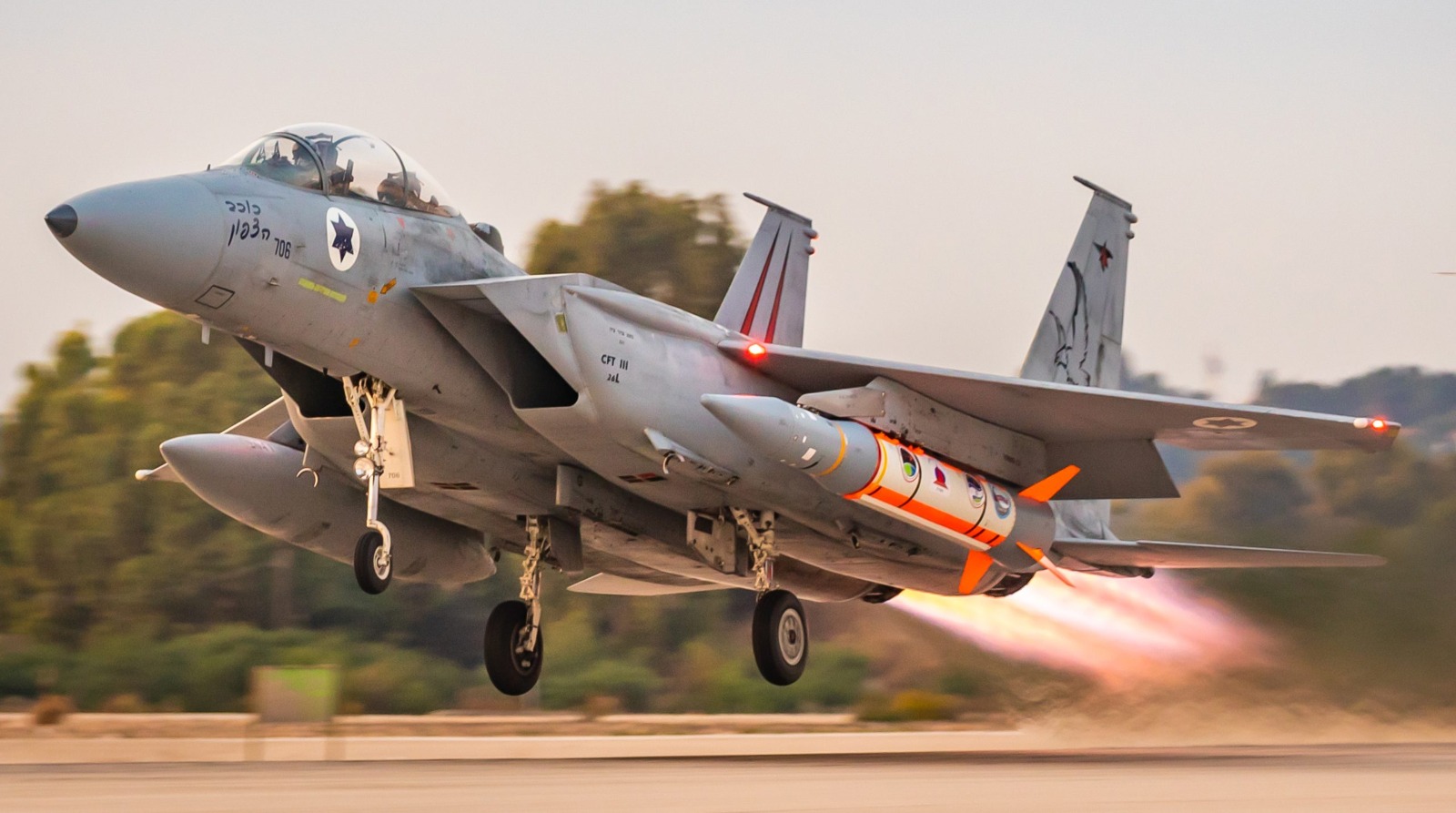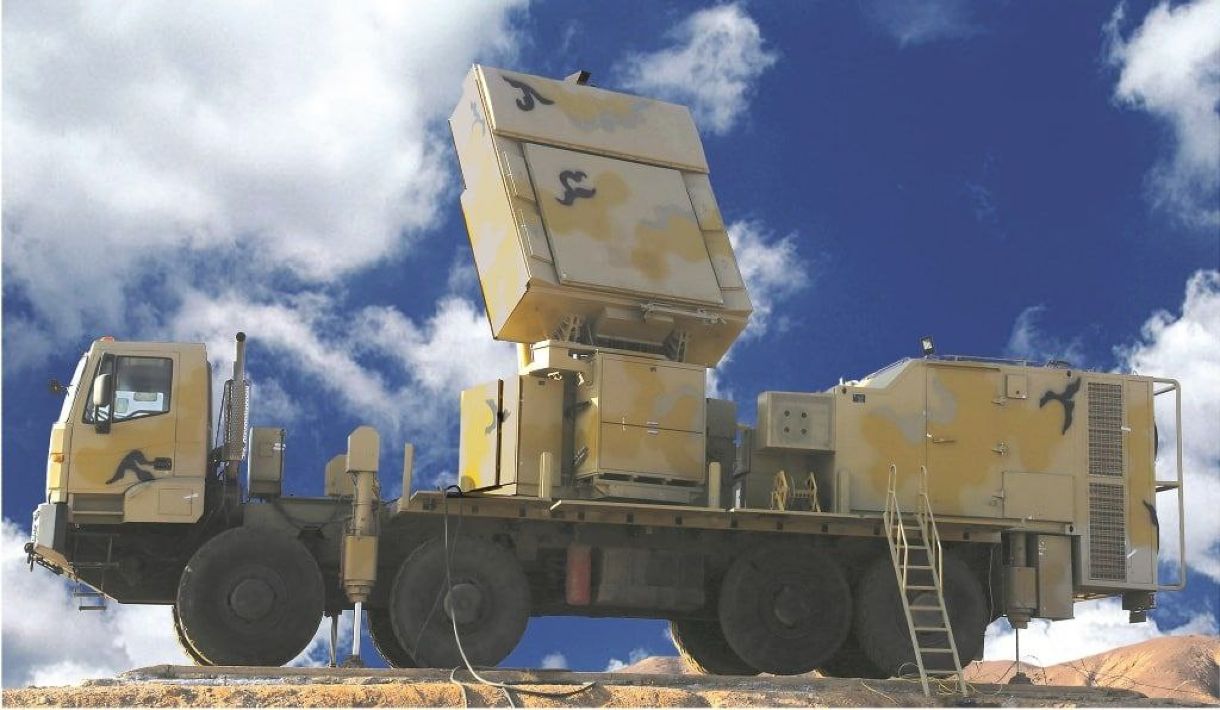Air-Launched Ballistic Missiles: How Israel ‘Exploited’ Loopholes In Iran’s Defenses & Easily Hit Its Targets

Israel’s recent strikes on Iran on October 26 have revealed a new level of military precision and tactical finesse, leveraging air-launched ballistic missiles (ALBMs) to target Iran’s air defense systems, missile production facilities, and other high-value sites.
The choice of ALBMs was strategic as it enabled Israeli jets to strike from far away distances, likely from Iraqi airspace, which complicated Iran’s efforts to intercept these fast-moving threats.
Initial signs of Israel’s strategy surfaced shortly after the attack, with images on social media revealing debris of Israeli missile boosters that had fallen in Iraq, pointing to the cross-border operation’s technical details.
Open-source intelligence and satellite imagery have also validated Israel’s use of these advanced air-launched ballistic missiles. By targeting and disabling Iranian air defense systems, Israel has underscored its evolving capability to conduct long-range, precision strikes without directly entering heavily contested airspace.
Iran, however, responded dismissively, with officials claiming to have countered the missiles and downplaying their warheads as “very light” compared to its own ground-launched ballistic arsenal.
Iran had itself fired over 180 ballistic missiles at Israel on October 1, escalating the ongoing conflict.
Israel’s October 26 operation wasn’t the first to feature ALBMs. Earlier in April, similar debris found in Iraq revealed that Israel had previously used these weapons to batter Iran.
These missiles highlight the stand-off advantages of systems like Rampage, Rocks, and Air LORA. All these systems possess significant range and can deliver results without deeply penetrating enemy territory. In addition, the recently leaked US intelligence documents mentioned a new Israeli ALBM, dubbed “Golden Horizon,” and a long-range drone, the RA-01.
Israel’s ALBM portfolio, including the well-known ROCKS, Rampage, and Air LORA, have ranges of around 175 miles. This range is sufficient to reach targets across the Iranian border but not deep into Iranian territory.
AfriPrime App link: FREE to download...
However, Israel’s Blue Sparrow missile represents a longer-range option with an estimated range of 1,250 miles. Incidentally, the Sparrow missile family, consisting of the Black Sparrow, Blue Sparrow, and Silver Sparrow, was originally created to test the effectiveness of Israeli anti-ballistic missile defense systems.

These missiles were designed to mimic the threats posed by Iraq’s Scud missiles during the Gulf War in 1991, as well as Iran’s Shahab-series ballistic missiles so that Israel could test the effectiveness of its own missile defense system against such threats. Now, Israel has used these same missiles to strike high-value targets in Iran.
Air-Launched Ballistic Missiles: Key Advantages
Air-launched ballistic missiles (ALBMs) are recognized for their efficiency and strategic advantages, particularly in scenarios demanding swift, deep-strike capabilities within contested environments where time, precision, and flexibility are critical.
One key benefit of ALBMs is their ability to perform radar-evasive maneuvers. This allows them to effectively engage targets while minimizing the likelihood of detection and interception.
Jan Barry Foster, a former Senior Intelligence Officer with the United States Air Force Security Service (USAFSS), told EurAsian Times that Israel’s decision to use Air-Launched Ballistic Missiles (ALBMs) was driven by their speed and ability to launch from random points.
Unlike ground-launched missiles, which must overcome the challenges of launch and initial flight at lower altitudes, ALBMs benefit from being carried by fighter jets or bombers closer to their targets.
This positioning enables them to cover significantly greater distances than their ground-launched counterparts. When launched from an aircraft, a missile gains an initial altitude and speed advantage, which is important for effective delivery.
Ground-launched missiles, in contrast, expend considerable energy to lift off the ground and face the additional resistance of denser air particles at lower altitudes, which can hinder their range and effectiveness.
These characteristics of ALBMs make them particularly suitable for Israel’s regional security strategy and provide a flexible and effective means of striking high-value targets.
On the other hand, Iran relies on its short-range ballistic missiles, which are capable of carrying heavier warheads, as a central component of its deterrence strategy and power projection in the region.
Additionally, ALBMs can be launched from a position closer to the target, thereby reducing the time it takes to reach their destination and minimizing the reaction time available for enemy defenses. This enhances their effectiveness and allows for a more streamlined attack.
Moreover, while cruise missiles offer certain advantages, Israel opted against their use primarily because they are more vulnerable to sophisticated air defense systems compared to ALBMs.
Speaking to EurAsian Times, Dr. Adib Enayati, an internationally recognized defense analyst with extensive knowledge of Iranian defense systems, explained, “Air-launch ballistic missiles present several key advantages as opposed to cruise or surface-launched missiles.
The general advantages involve mobility (as it can be deployed using airborne assets), enhanced survivability (because it can be launched from high altitudes to avoid detection), and extended range (primarily because the missile is being launched from an airborne asset from high altitudes).
So technically speaking, the missile starts its flight from where the atmosphere is thinner as it can conserve fuel and travel much farther, and if the missile features a boost-glide feature that can effectively enhance its range.”
He added, “The other advantages that I can think about are the stealth and surprise factor, where the missile could have been augmented with passive stealth features to enhance its survivability and avoid detection. Israel built a wide range of Air-Launched Ballistic missile capabilities, which ultimately enabled it to exploit the Iranian air and missile defense systems.”
Overall, both ground-launched ballistic missiles and cruise missiles are prevalent in the arsenals of many nations, including Iran, Ukraine, and Russia, as evidenced by their recent use in conflicts.
However, the flexibility afforded by ALBMs, due to their launch from aircraft, offers significant advantages for strike planners, allowing for more dynamic and unpredictable military operations.
A Breakdown of Vulnerabilities In Iran’s Air & Missile Defense
Dr. Enayati offered an in-depth explanation of the factors that probably led Israel to opt for air-launched ballistic missiles (ALBMs) against Iran, beginning with a look into Iran’s air and missile defense systems.
He pointed out, “The majority of Iranian air and missile defense systems are either domestically produced, imported or improved based on what they have acquired from the United States prior to the 1979 revolution.”
Due to the absence of a modern air force, Iran has heavily invested in long-range radar systems designed to provide early warning and detection. However, to fully understand the rationale behind Israel’s use of ALBMs, one must first grasp the structure of Iran’s defense network and its vulnerabilities.
Dr. Enayati explained, “Iran employs long-range earth warning detection radars across its western and central sectors. The majority of these radars are domestically produced. They operate on the VHV and UHF bands and have over-the-horizon configurations. The utilization of these bands would aid long-range detection, though the resolution of the radars and their effective range is open to debate.”
Iran’s airspace is densely equipped with early warning and detection systems intended to enable timely responses to potential threats. He said that Iran has spent billions on developing domestic air and missile defenses, leading to systems like the Bavar-373, based on Russia’s S-300 platform.

Although many components of Iran’s arsenal are inspired by Russian technology, some, such as the Sayyad-2 hybrid interceptor, have American origins, designed originally for the US-made medium-range HAWK missile systems.
Dr. Enayati further stated, “While Iran has a wide range of SHORAD (Short-Range Air Defense) and HIMAD (High to Medium Air Defense) systems to support its air defense zones, it has always lacked one primary component, and that was ballistic missile defense. They have covered the majority of medium to low threats, such as cruise missiles, particularly the United States tomahawk subsonic systems.”
However, except for the Russian-made S-300, Iran lacks adequate defenses against advanced ballistic missile threats. Recently, Iran developed the ARMAAN anti-ballistic missile system, but footage from its trials has failed to impress experts, casting doubt on its effectiveness, according to Dr. Enayati.
Recognizing these weaknesses, Israel tailored its approach to counter Iran’s air and missile defenses. Though ALBMs are not new, they present unique tactical advantages in evading defenses. Smaller and more flexible than their ground-launched counterparts, ALBMs can be deployed from airborne platforms, enhancing their operational versatility.
He pointed out that Israel’s attack on Iran unfolded in three stages. In the first phase, Israeli forces targeted Iran’s detection and tracking radars using electronic and kinetic methods. The second phase involved ALBMs aimed at key components within Iranian territory, including elements of the S-300 system, supported by electronic countermeasures to ensure effective strikes. Finally, Israeli jets penetrated Iranian airspace with minimal resistance, as Iran’s high- and medium-altitude defense systems had been neutralized.
Dr. Enayati explained that air-launched cruise missiles would have faced greater difficulty breaching Iran’s densely fortified air defenses, which are designed to counter them. In contrast, the use of ALBMs allowed for more precise strikes.
He further said, “Another factor that I think it’s important to understand is that the formation of the Iranian air and missile defense components has been unprofessional, in my opinion. Their focus and formation did not exhibit predictive catastrophe, and Iran failed to maintain an aggressive formation during a highly anticipated attack.”
“The Air launch ballistic missiles are a formidable weapon of choice when one has a superior airforce, and Iran has failed to anticipate it. Further, the Iranian early warning and detection in its western sector have failed to detect, track, and survive the initial electronic suppression mission, which enabled a powerful kinetic strike against these assets,” he added.
Furthermore, Iran’s outdated air force and ineffective threat-response capabilities compounded its inability to counter Israel’s strike, underscoring the strategic superiority of air-launched ballistic missiles in this context.
AfriPrime App link: FREE to download...
- Questions and Answers
- Opinion
- Story/Motivational/Inspiring
- Technology
- Art
- Causes
- Crafts
- Dance
- Drinks
- Film/Movie
- Fitness
- Food
- Jogos
- Gardening
- Health
- Início
- Literature
- Music
- Networking
- Outro
- Party
- Religion
- Shopping
- Sports
- Theater
- Wellness
- News
- Culture
- War machines and policy

